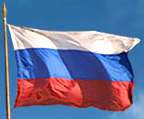About Russia

Sprawling across two continents and spanning an incredible nine time zones (having cut down from 11 in 2010), Russia is the largest country in the world by far. Within its vast boundaries lie some of the planet’s most luxurious palaces, extensive plateaus, highest mountains, coldest cities, strongest spirits, best ballet companies, and largest collections of stacking dolls. In terms of culture, literature is one of the country’s most notable displays; Russian authors such as Tolstoy, Bulgakov, Dostoyevsky and Nabokov are celebrated worldwide for creating some of the greatest works of the 19th and 20th centuries.
One of the fast-growing economies in the world, alongside the other BRICS countries, Russia is keen to internationalize its higher education system, and is investing in developing its universities and extending support for international applicants.
GEOGRAPHY

The western part of Russia (one quarter of the whole area) is situated within Eastern Europe. It is called the European part of Russia. The territory situated to the east of the Urals (three quarters of the whole area) is the Asiatic part of Russia.
The main part of dry lands is situated between the 70º and 50º N in the temperate zone. About 18 % of Russian territory is situated within the Arctic Circle. That allows to designate subarctic and arctic territories within the country.
The northernmost point of Russia - Cape Chelyuskin (77043'N, 104018'E)- is situated in the continent in the Taimyr Peninsula. It was reached in May of 1742 by S.Chelyuskin, the member of the second Kamchatka (the Great North) expedition.
The insular northernmost point of our country is Cape Fligeli in the Rudolf Island of Franz Josef Land Archiepelago (81049'N). The distance between this point and the North Pole is only 900 km.
The southernmost point is situated in Dagestan in the watershed of rivers Samura and Kura, to the southwest of the mountain Bazardyuzyu (41010'N).
The parallel of the Russian southernmost point comes through Naples and Madrid in Europe and through New York in America.
The westernmost point of Russia (19038'W) is situated in Baltic sandbank of the Gdansk Bay in the Baltic Sea. Here Russia is bordered by Poland.
The easternmost contenental point - Cape Dezhnyov (6605'N, 169040'W) - is situated in the Chukchi Peninsula. The easternmost point of Russian territory is situated in the Ratmanov Island in the Strait of Bering (1690 02'W).
Russia is washed by the waters of three oceans: the Arctic in the north, the Atlantic in the west and the Pacific in the east, and has the most extensive borders - 62,3 thousand km, from which 24,6 thousand km are land borders and 37,7 thousand km are sea borders.
The sea borders of the Russian Federation lie in 12 miles (22,7 km) from the coast, they separate the territorial waters, where the entry of foreign ships is possible only by approbation of Russia.
In 200 miles from the coast lies the sea economic area of the country, within this territory the foreign ships are able to sail without special permition, but the scientific research and exploiting of natural resources are possible only by approbation of the Government of the Russian Federation. The western border rises from the coast of the Barents Sea in northwest of the Kola Peninsula, crosses the Baltic Sea and reaches the Black Sea. Almost over a length of this border there is no clearly defined nature boundary. The western neighbours of Russia are Norway, Finland, Estonia, Latvia, Belarus and Ukraine. Kaliningradskaya oblast, separated from the main territory of Russia, is bordered by the Lithuania and Poland.
The southern border lies from the Black Sea coast up to the coast of the Sea of Japan. Along the Great Caucasus Range the border with Georgia and Azerbaijan lies. The rivers Argun, Amur and Ussuri separate Russia from Mongolia and China. In the sourth Russia is bordered also by Kazakhstan and Korea.
The sea eastern border of Russia comes through the waters of the Pasific Ocean and its seas: the Sea of Japan, the Sea of Okhotsk and the Bering Sea, here the nearest neighbours of Russia are the USA and Japan. The rather narrow La Perouse Strait separates the Russian islands Sakhalin and Kuriles from the Japan island of Hokkaido. The Sea of Japan and its straits do not freeze. The border with the USA comes through the narrow (5 km) strait between the islands of Diomid, the Ratmanov island (Russia) and the Kruzenshtern island (USA).
The northern borders of Russia entily lies in the sea waters of the Arctic Ocean: the Barents, Kara, Laptev, East Siberian and Chukchi seas. All of them, excepting the Barents Sea, the whole year are covered with drift-ice. Within the Arctic Ocean from the coast of Russia up to the North Pole the Russian sector of Arctic lies. It is situated between the 32º4'45''E and 168º49'30''W. All islands within this sector, excepting several islands of Spitsbergen Archipelago, also belong to the Russian Federation
PEOPLE
Population

73,1% (97.954.000) of them live in cities, towns and urban village,furthermore
9.269.000 people live in Moscow and 6.900.000 people - in Moscovskaya oblast (Moscow region)
5.897.000 live in Saint-Petersburg and 2.350.000 - in Leningradskaya oblast (a region with Saint-Petersburg as its centre.
Population Distribution

The Language

Climate and Weather

State Insignia
The National Flag

The State Seal

The National Anthem

5 Steps To Applying For Russian University

Choose Programme and University

Prepare your Documents

Learn about Financing and Scholarships

Apply for Admission

Collect your Invitation and get your Student Visa